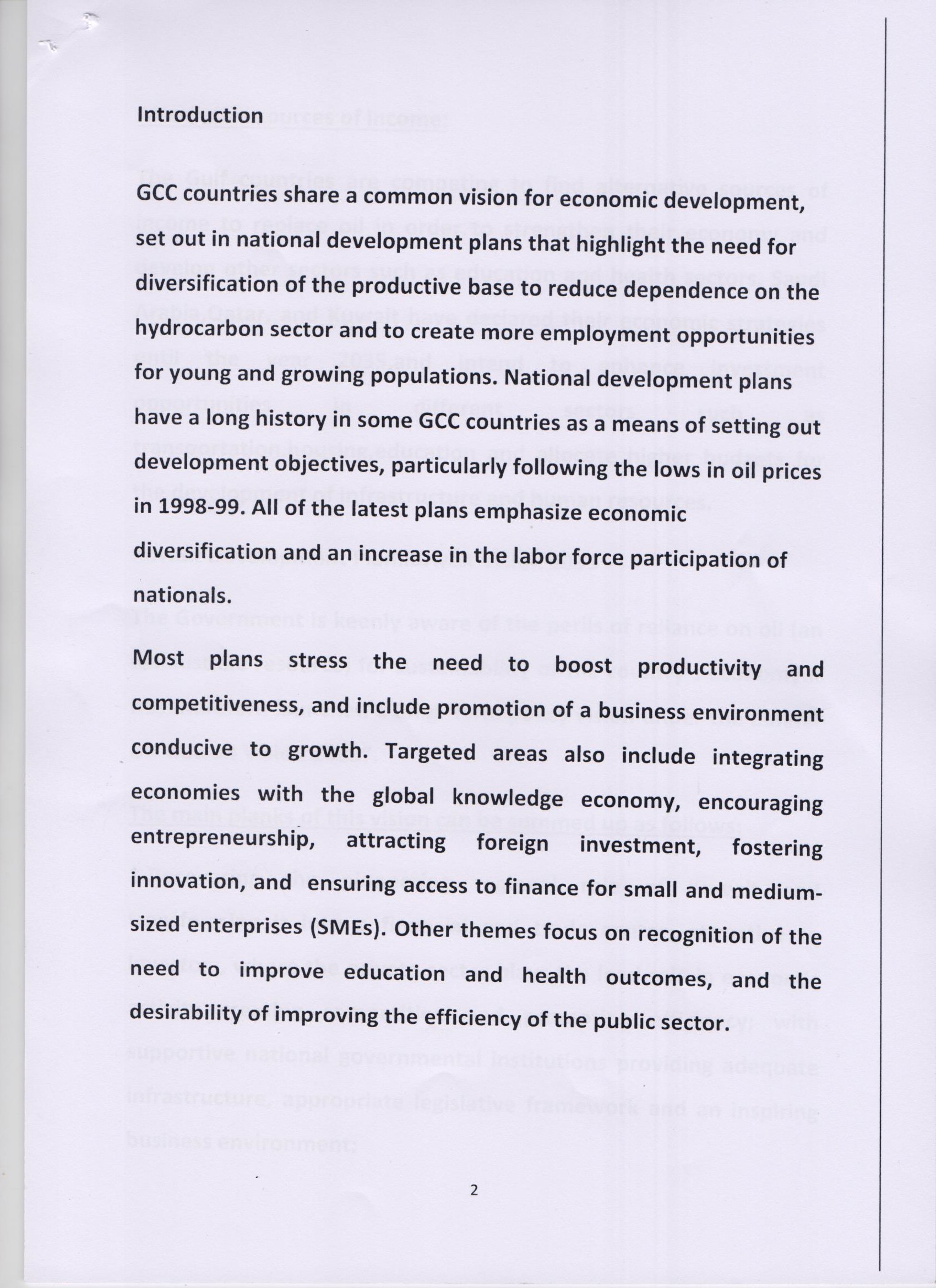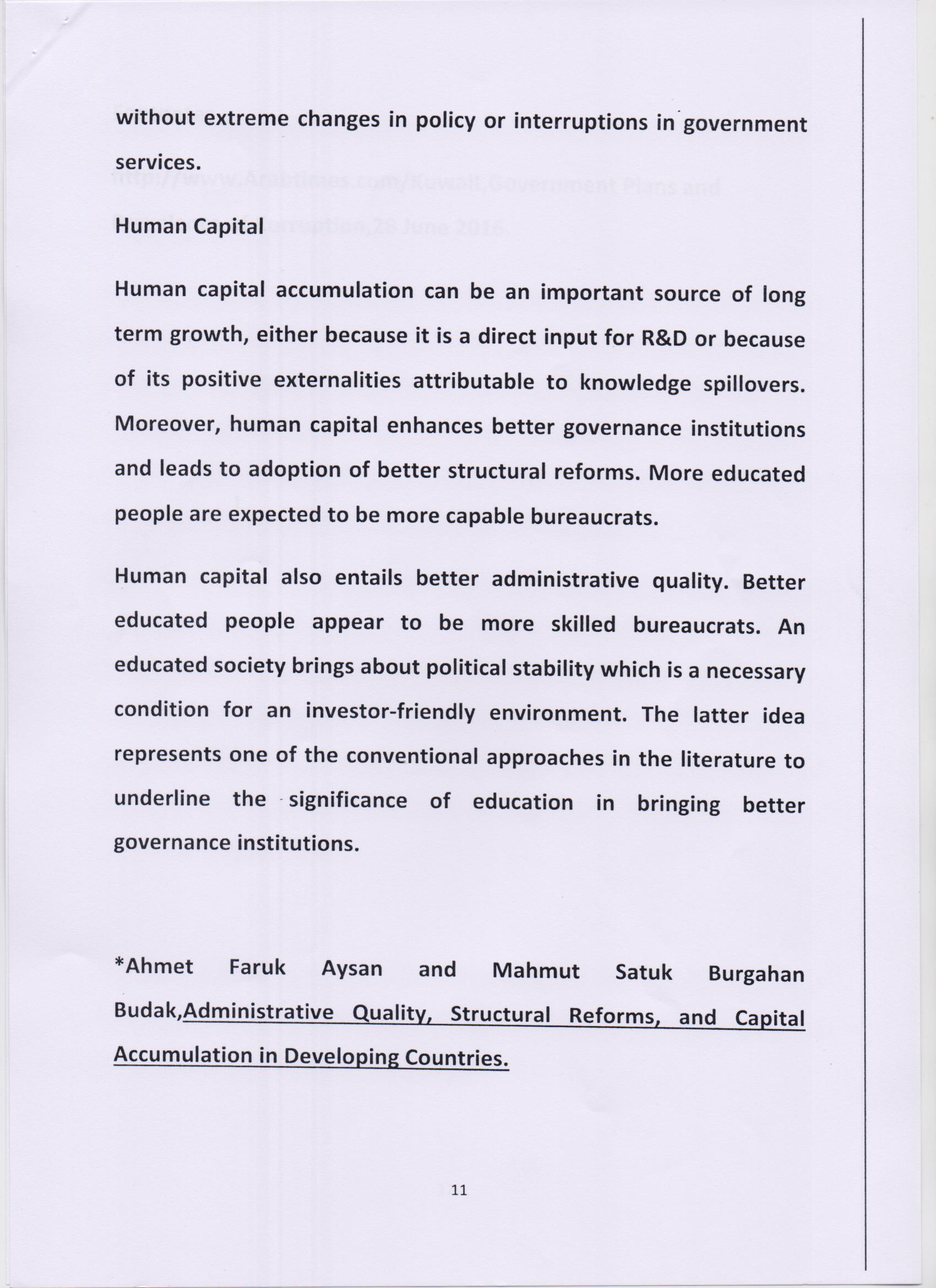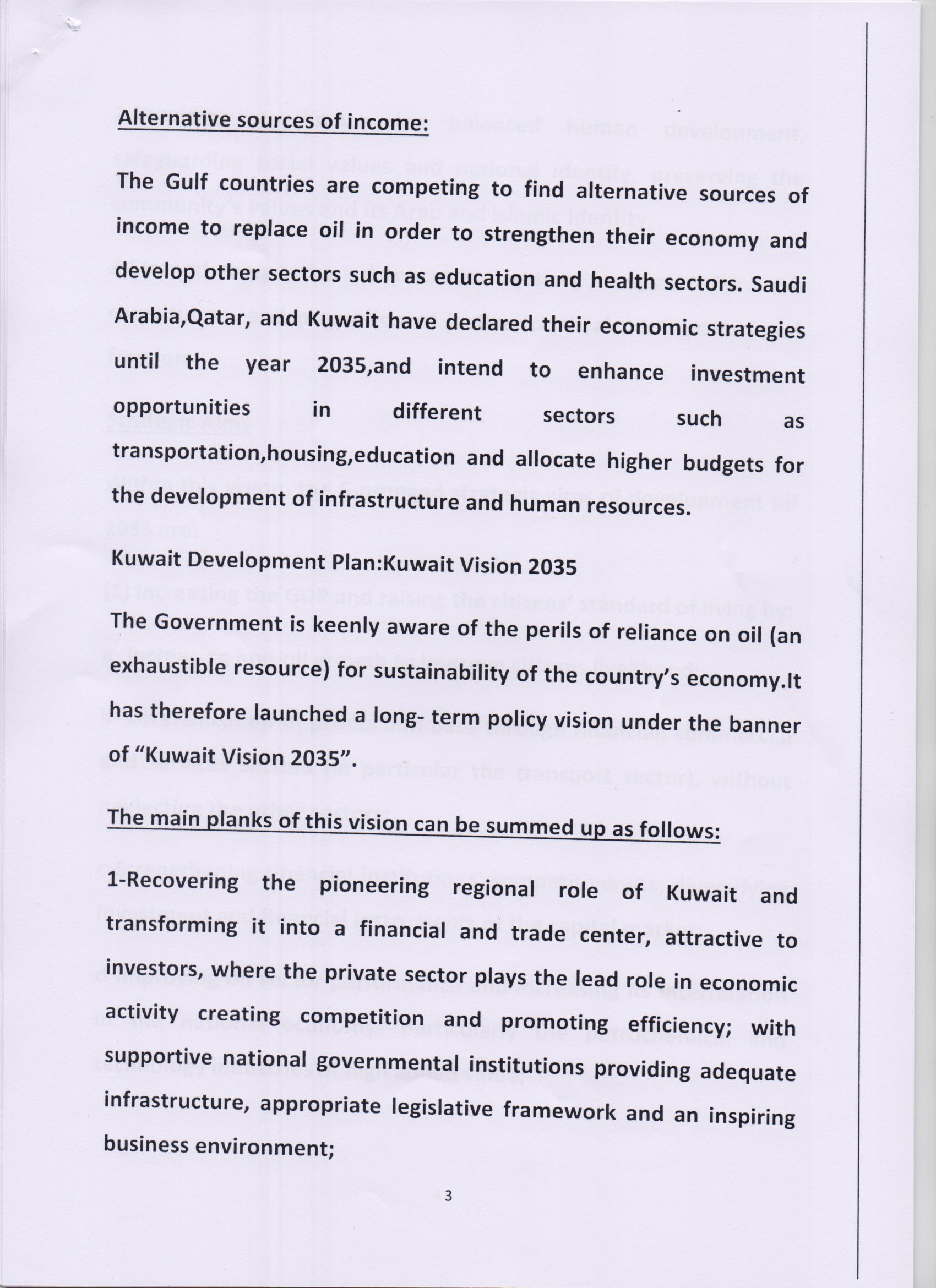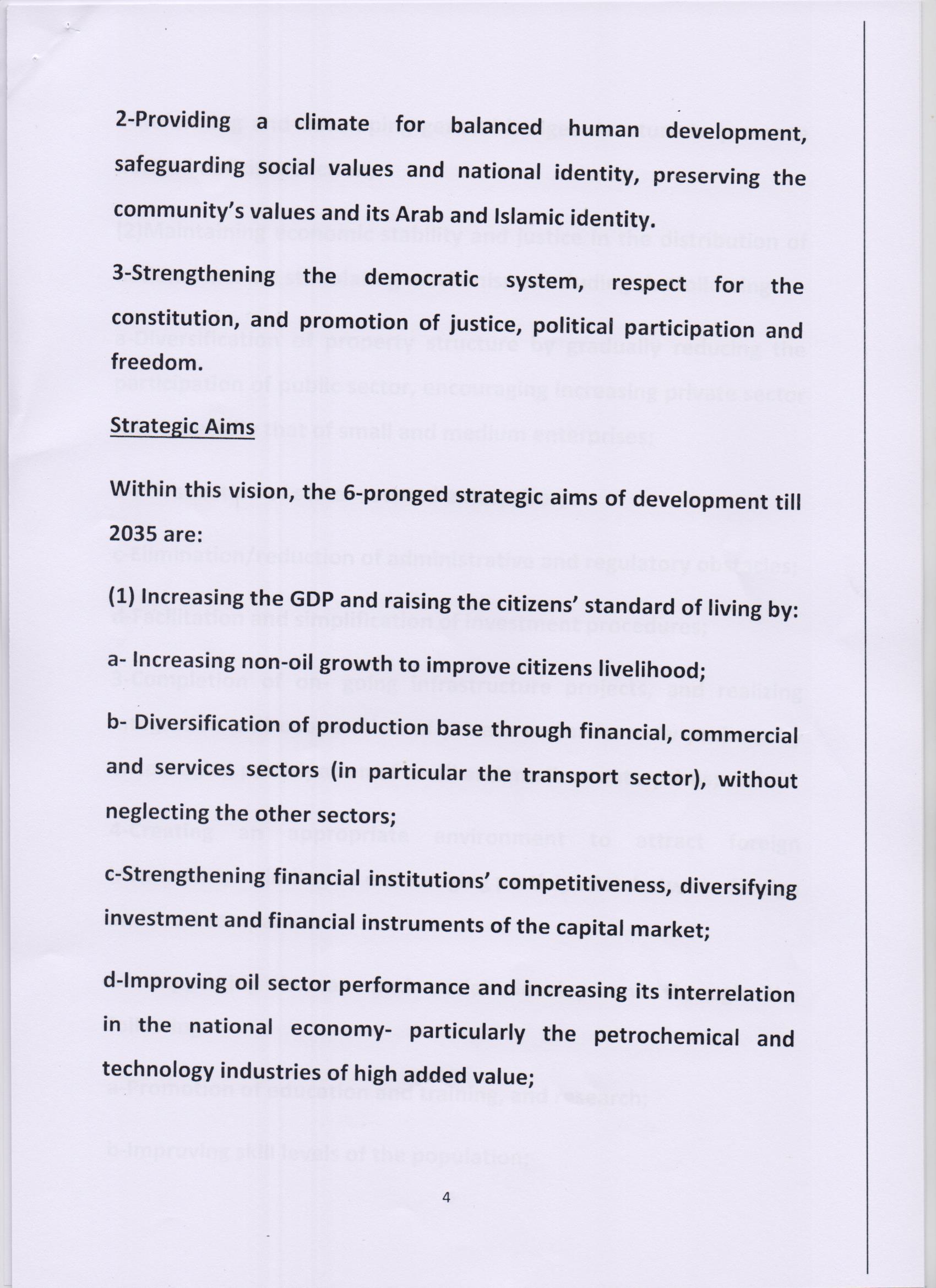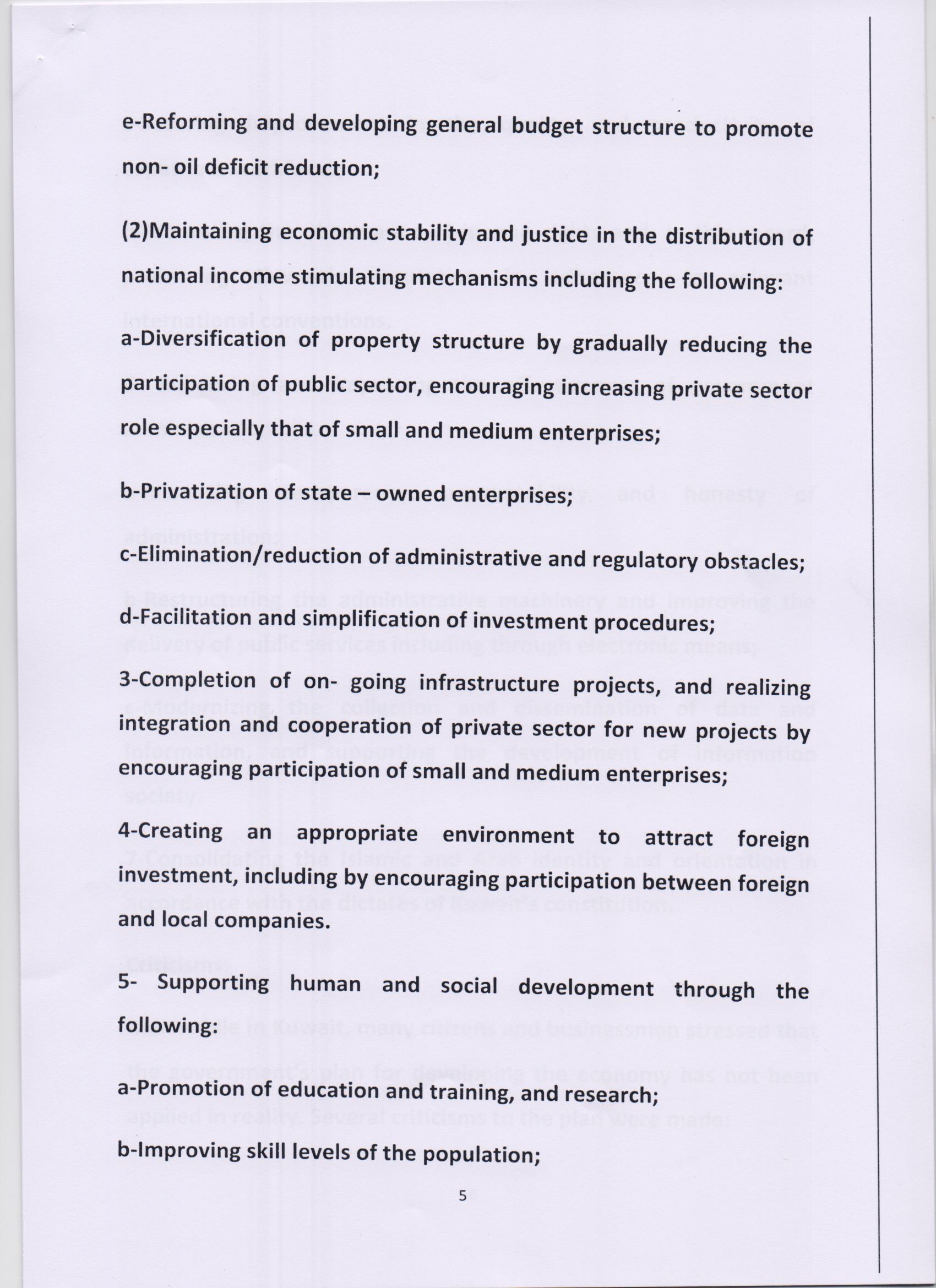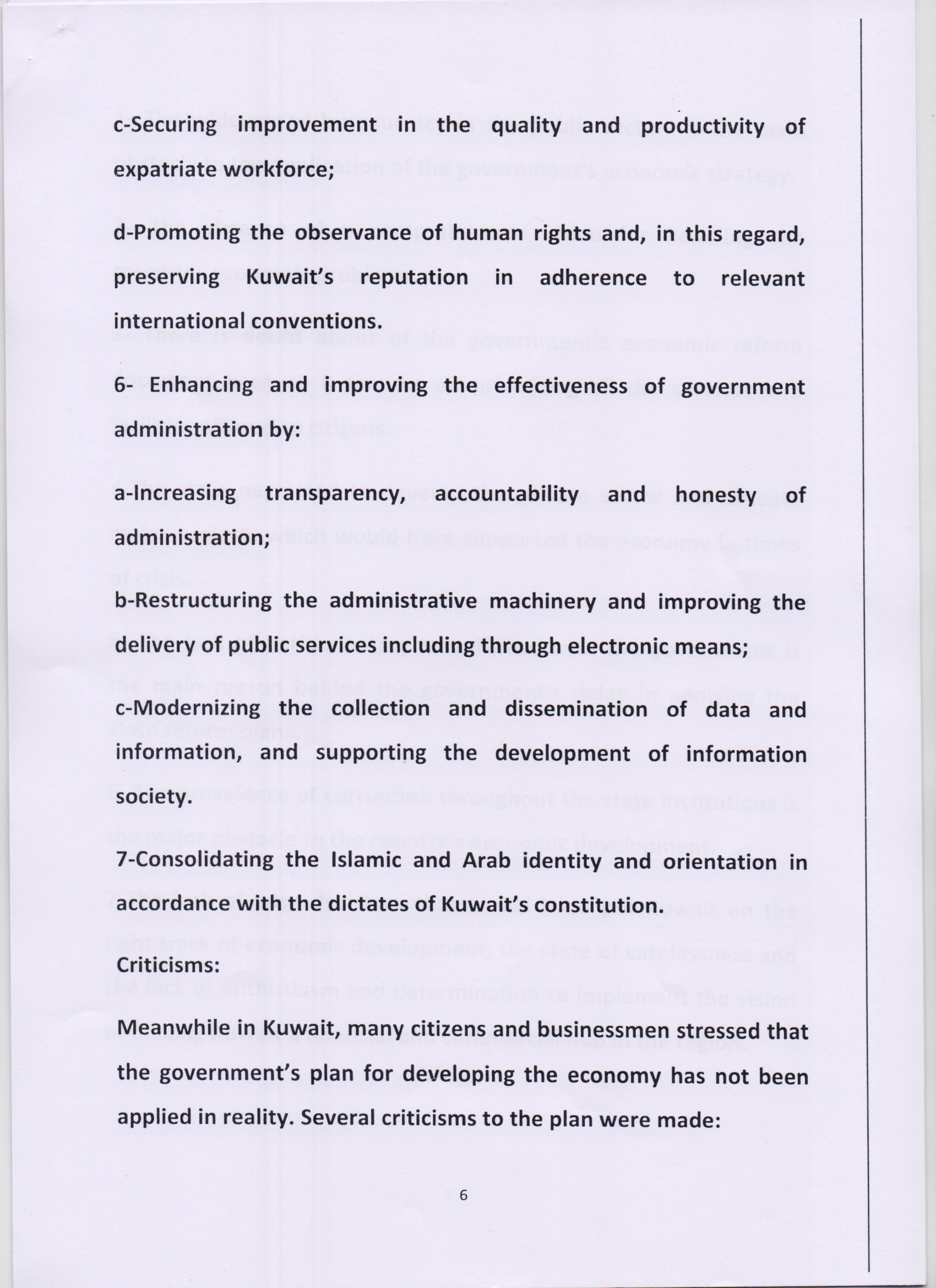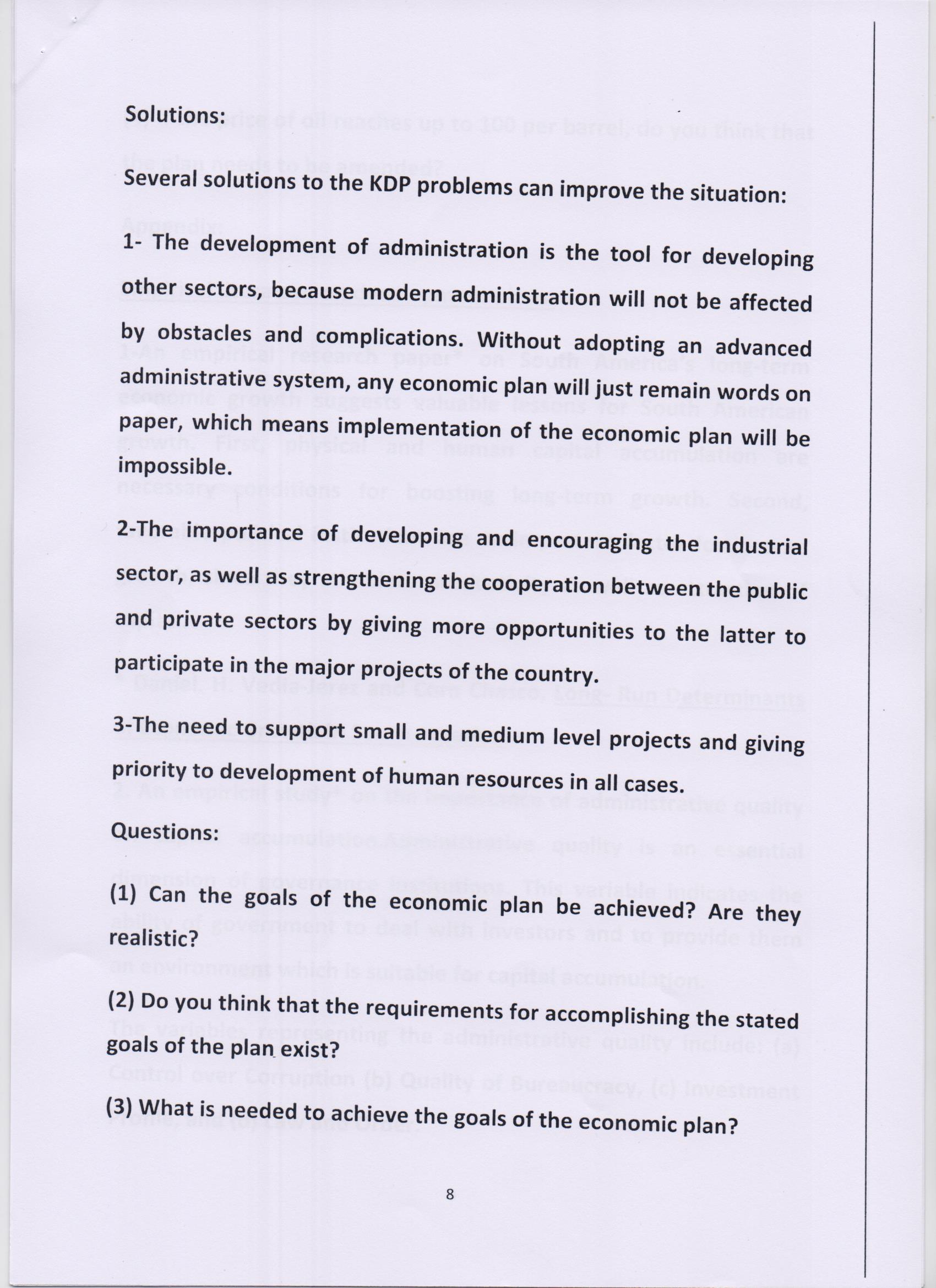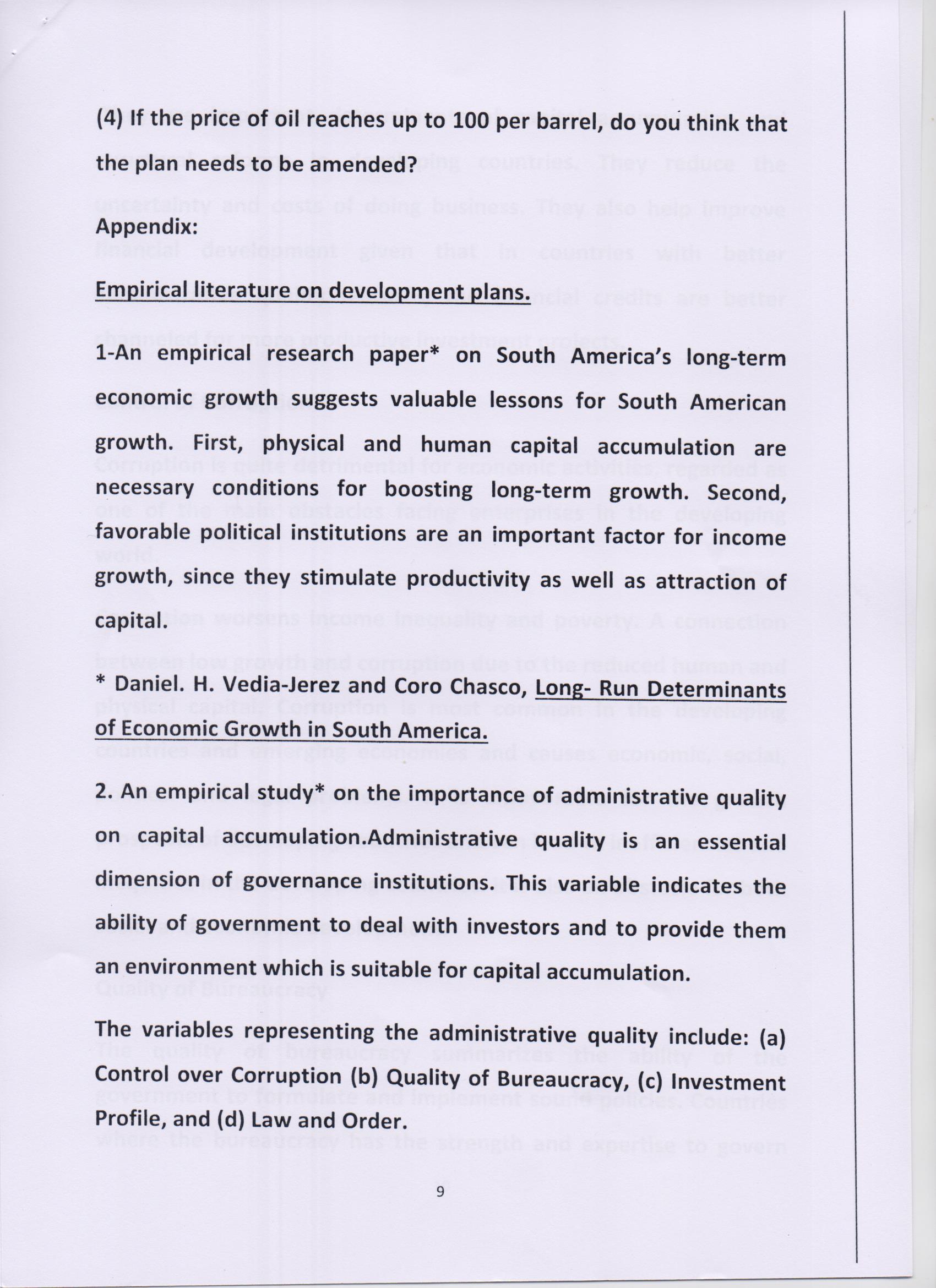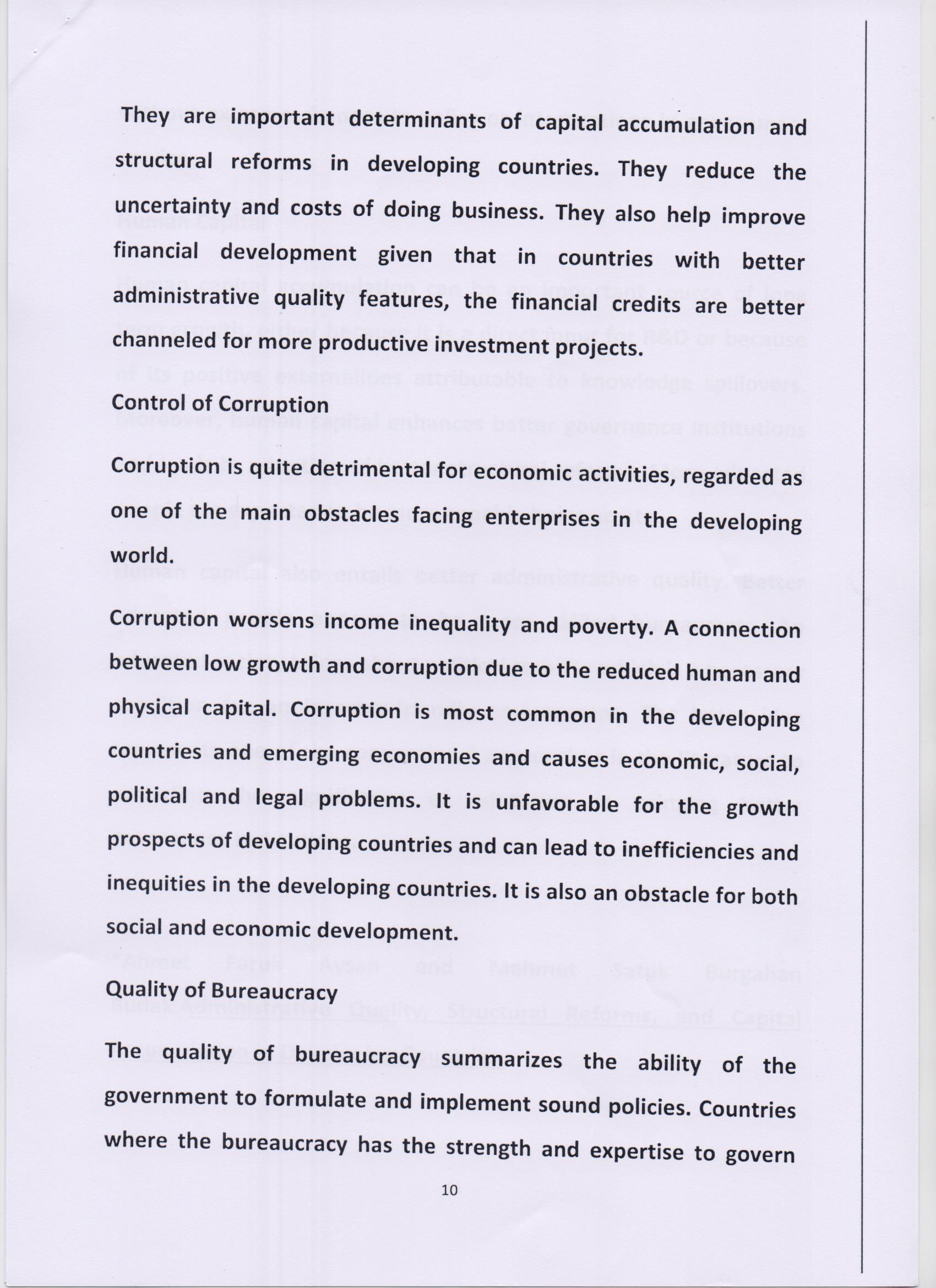Can you please follow the steps to answer the case analysis for the case study.
Introduction GCC countries share a common vision for economic development, set out in national development plans that highlight the need for diversification of the productive base to reduce dependence on the hydrocarbon sector and to create more employment opportunities for young and growing populations. National development plans have a long history in some GCC countries as a means of setting out development objectives, particularly following the lows in oil prices in 1998-99. All of the latest plans emphasize economic diversification and an increase in the labor force participation of nationals. Most plans stress the need to boost productivity and competitiveness, and include promotion of a business environment conducive to growth. Targeted areas also include integrating economies with the global knowledge economy, encouraging entrepreneurship, attracting foreign investment, fostering innovation, and ensuring access to finance for small and medium- sized enterprises (SMEs). Other themes focus on recognition of the need to improve education and health outcomes, and the desirability of improving the efciency of the public sector. without extreme changes in policy or interruptions in'government services. Human Capital Human capital accumulation can be an important source of long term growth, either because it is a direct input for R&D or because of its positive externalities attributable to knowledge spillovers. Moreover, human capital enhances better governance institutions and leads to adoption of better structural reforms. More educated people are expected to be more capable bureaucrats. Human capital also entails better administrative quality. Better educated people appear to be more skilled bureaucrats. An educated society brings about political stability which is a necessary condition for an investor-friendly environment. The latter idea represents one of the conventional approaches in the literature to underline the significance of education in bringing better governance institutions. *Ahmet Faruk Aysan and Mahmut Satuk Burgahan Budak,Administrative Qualityl Structural ReformsE and Capital Accumulation in Developing Countries. 11 Alternative sources of income: ___________ The Gulf countries are competing to find alternative sources of income to replace oil in order to strengthen their economy and develop other sectors such as education and health sectors. Saudi Arabia,Qatar, and Kuwait have declared their economic strategies until the year 2035,and intend to enhance investment opportunities in different sectors such as transportation,housing,education and allocate higher budgets for the development of infrastructure and human resources. Kuwait Development Plan:Kuwait Vision 2035 The Government is keenly aware of the perils of reliance on oil (an exhaustible resource) for sustainability of the country's economy.lt has therefore launched a long term policy vision under the banner of "Kuwait Vision 2035\". The main planks of this vision can be summed up as follows: 1-Recovering the pioneering regional role of Kuwait and transforming it into a financial and trade center, attractive to investors, where the private sector plays the lead role in economic activity creating competition and promoting efficiency; with supportive national governmental institutions providing adequate infrastructure, appropriate legislative framework and an inspiring business environment; ZProviding a climate for balanced human development, safeguarding social values and national identity, preserving the community's values and its Arab and Islamic identity. 3-Strengthening the democratic system, respect for the constitution, and promotion of justice, political participation and freedom. Strategic Aims Within this vision, the 6-pronged strategic aims of development till 2035 are: (1) increasing the GDP and raising the citizens' standard of living by: a Increasing non-oil growth to improve citizens livelihood; b- Diversification of production base through financial, commercial and services sectors (in particular the transport sector), without neglecting the other sectors; c-Strengthening financial institutions' competitiveness, diversifying investment and financial instruments of the capital market; d-lmproving oil sector performance and increasing its interrelation in the national economy- particularly the petrochemical and technology industries of high added value; e-Reforming and developing general budget structure to promote non- oil deficit reduction; (2)Maintaining economic stability and justice in the distribution of national income Stimulating mechanisms including the following: a-Diversification of property structure by gradually reducing the participation of public sector, encouraging increasing private sector role especially that of small and medium enterprises; b-Privatization of state owned enterprises; c-EIimination/reduction of administrative and regulatory obstacles; d-Facilitation and simplification of investment procedures; 3-Completion of on- going infrastructure projects, and realizing integration and cooperation of private sector for new projects by encouraging participation of small and medium enterprises; 4-Creating an appmpriate environment to attract foreign investment, including by encouraging participation between foreign and local companies. 5- Supporting human and social development through the following: aPromotion of education and training, and research; b-lmproving skill levels of the population; 5 c-Securing improvement in the quality and productivity of expatriate workforce; d-Promoting the observance of human rights and, in this regard, preserving Kuwait's reputation in adherence to relevant international conventions. 6- Enhancing and improving the effectiveness of government administration by: a-Increasing transparency, accountability and honesty of administration; b-Restructuring the administrative machinery and improving the delivery of public services including through electronic means; c-Modernizing the collection and dissemination of data and information, and supporting the development of information society. 7-Consolidating the Islamic and Arab identity and orientation in accordance with the dictates of Kuwait's constitution. Criticisms: Meanwhile in Kuwait, many citizens and businessmen stressed that the government's plan for developing the economy has not been applied in reality. Several criticisms to the plan were made: 1- The widespread bureaucracy in the public sectors is the main obstacle to the application of the government's economic strategy. 2- The absence of a comprehensive vision for handling the country's economic problems. 3- There is doubt about of the government's economic reform document because it focuses on privatizing all the services and facilities offered to citizens. 4-The state neglected to develop the private sector and execute major projects which would have supported the economy in times of crisis. 5- The lack of parliamentary surveillance over the government is the main reason behind the government's delay in applying the state reform plans. 6- The prevalence of corruption throughout the state institutions is the major obstacle to the country's economic development. 7-The lack of wise decisions that would have put Kuwait on the right track of economic development, the state of carelessness and the lack of enthusiasm and determination to implement the vision of making Kuwait a financial and commercial hub in the region. Solutions: Several solutions to the KDP problems can improve the situation: 1- The development of administration is the tool for developing other sectors, because modern administration will not be affected by obstacles and complications. Without adopting an advanced administrative system, any economic plan will just remain words on paper, which means implementation of the economic plan will be impossible. 2-The importance of developing and encouraging the industrial participate in the major projects of the country. 3-The need to support small and medium level projects and giving priority to development of human resources in all cases. Questions: (1) Can the goals of the economic plan be achieved? Are they realistic? (2) Do you think that the requirements for accomplishing the stated goals of the plan exist? (4) If the price of oil reaches up to 100 per barrel, do you think that the plan needs to be amended? Appendix: Empirical literature on development plans. 1-An empirical research paper* on South America's long-term economic growth suggests valuable lessons for South American growth. First, physical and human capital accumulation are necessary conditions for boosting long-term growth. Second, favorable political institutions are an important factor for income growth, since they stimulate productivity as well as attraction of capital. * Daniel. H. Vedia-Jerez and Com Chasco, Long Run Determinants of Economic Growth in South America. 2. An empirical study\" on the importance of administrative quality on capital accumulation.Administrative quality is an essential dimension of governance institutions. This variable indicates the ability of government to deal with investors and to provide them an environment which is suitable for capital accumulation. The variables representing the administrative quality include: (a) Control over Corruption (b) Quality of Bureaucracy, (c) Investment Profile, and (d) Law and Order. They are important determinants of capital accumulation and structural reforms in developing countries. They reduce the uncertainty and costs of doing business. They also help improve financial development given that in countries with better administrative quality features, the financial credits are better channeled for more productive investment projects. Control of Corruption Corruption is quite detrimental for economic activities, regarded as Corruption worsens income inequality and poverty. A connection between low growth and corruption clue to the reduced human and physical capital. Corruption is most common in the developing countries and emerging economies and causes economic, social, political and legal problems. It is unfavorable for the growth prospects of developing countries and can lead to inefficiencies and inequities in the developing countries. It is also an obstacle for both social and economic development. Quality of Bureaucracy Complex decision making environments Apply knowledge to gain experience . A case study is an account of what happened to a company Reallife situations faced by managers Place the student in a managerial position Logical process in decision making Steps in Case Analysis: IIdentify and diagnose problem areas 2Develop alternative solutions and evaluate each alternative by assigning qualitative or quantitative values: Sources of values: academic discipline -one's OWT] values the organization's goals and objectives 3Choose an alternative solutiOn, the best one, based on: facts inferences -sp_ecu1ation assumpti on Sources of information: World Wide Web A;r1nua1 reports . Newspapers sPeriodicals 4-Conc1usion
